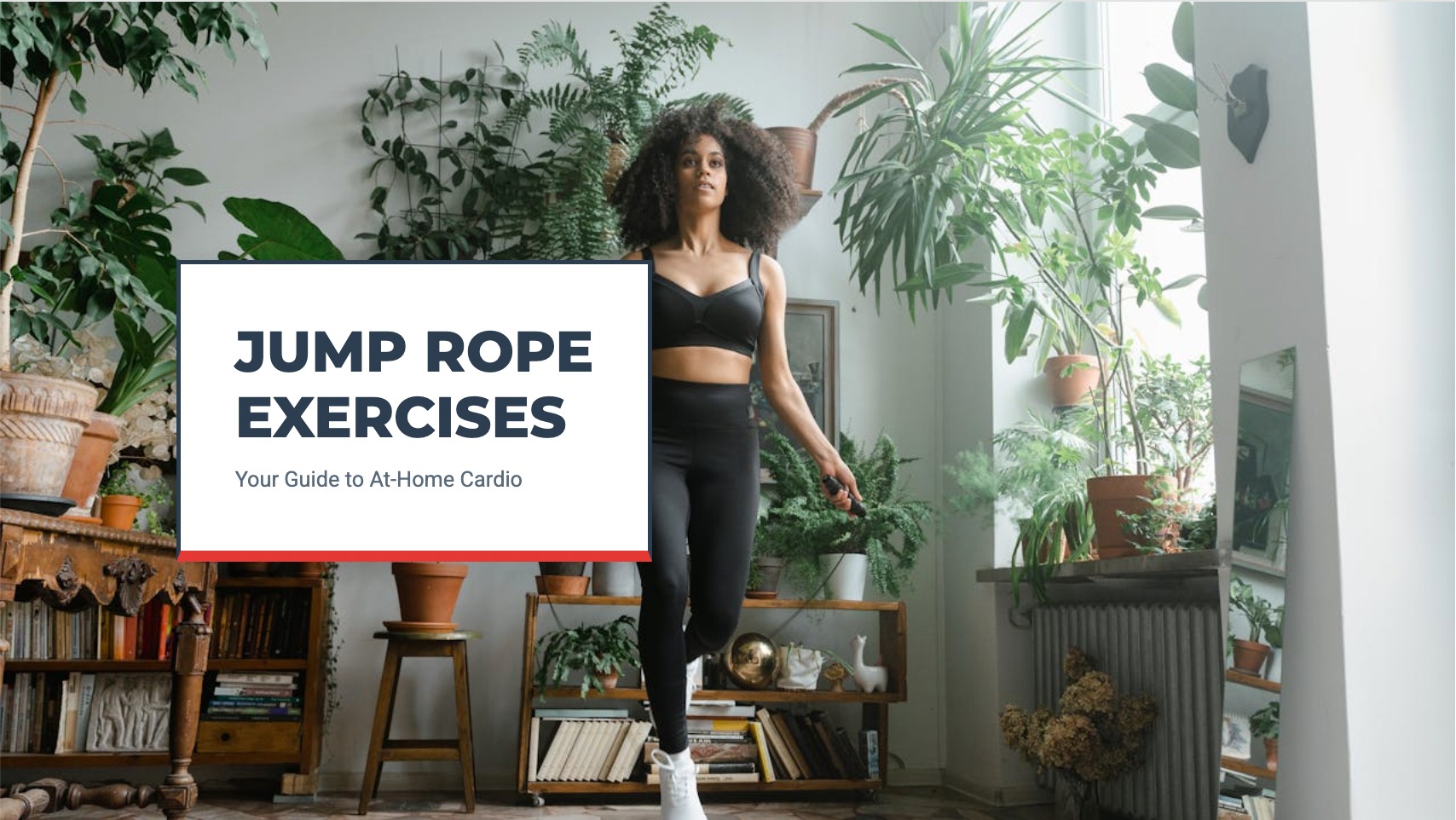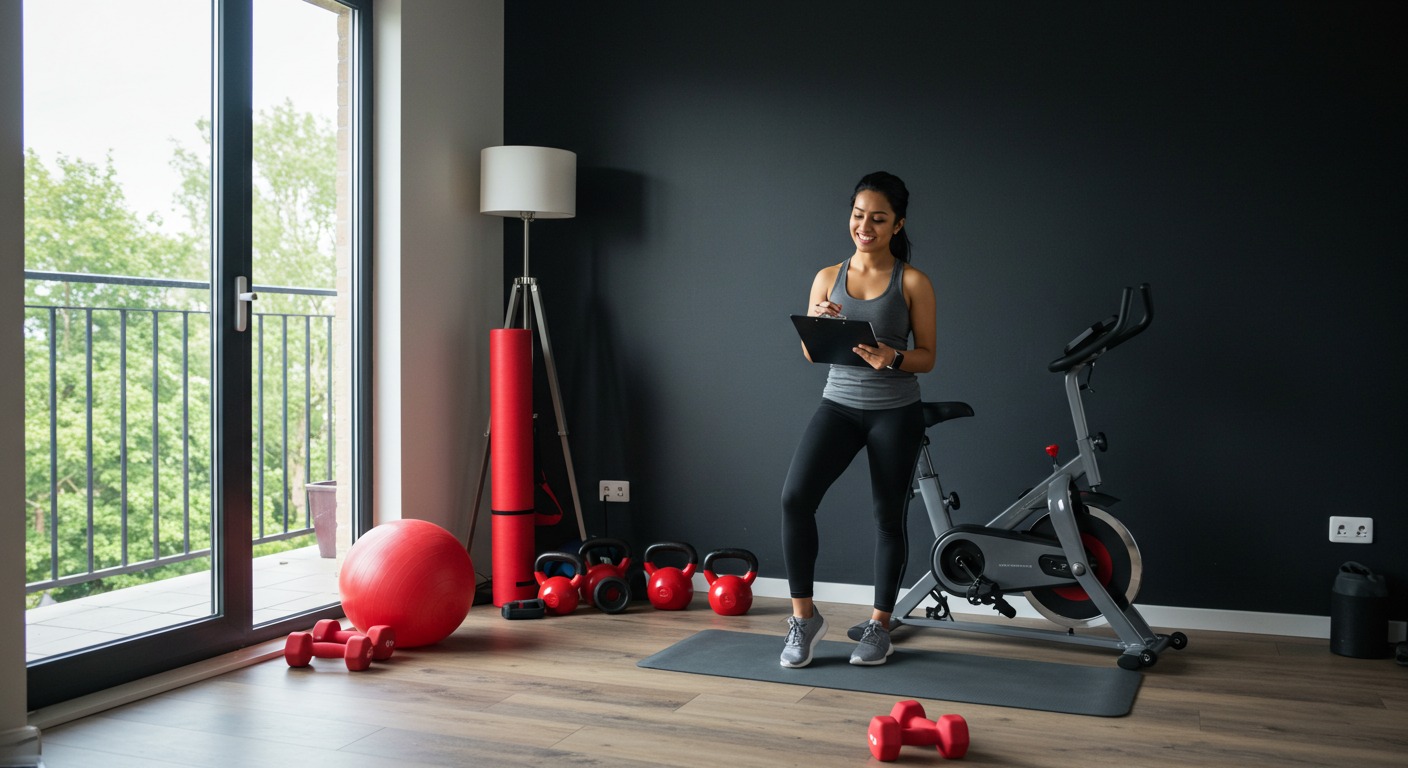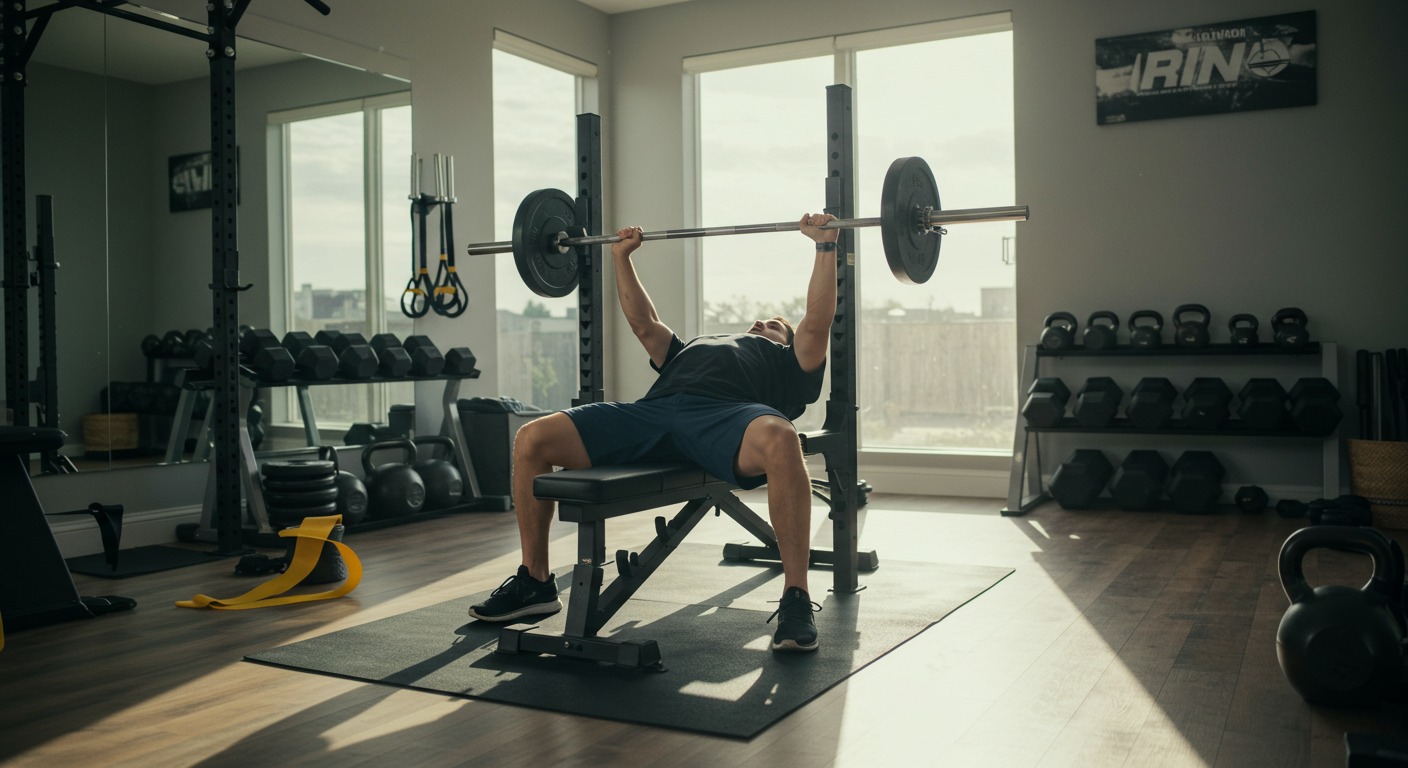Disclosure Information
This blog contains affiliate links. If you make a purchase through one of these links, our team may earn a commission at no extra cost to you. Learn more. Thanks for your support!
Jump rope training has exploded in popularity as one of the most efficient cardiovascular workouts available. This simple piece of equipment delivers incredible results in minimal space, making it perfect for home fitness enthusiasts.
Whether you’re a complete beginner or looking to elevate your current routine, jump rope offers unparalleled versatility. From basic bounce steps to advanced footwork patterns, there’s always room to grow and challenge yourself.
Why Jump Rope is Perfect for Home Workouts
Jump rope requires minimal equipment and space, making it ideal for apartment living or small home gyms. A quality rope costs less than most gym memberships, yet provides unlimited workout possibilities.
The cardiovascular benefits are remarkable. Studies show that just 10 minutes of jump rope can burn as many calories as 30 minutes of jogging (source: American Council on Exercise). This efficiency makes it perfect for busy schedules.
Jump rope also improves coordination, agility, and timing. These skills transfer to other sports and daily activities, making you more athletic overall.
The learning curve is gentle yet rewarding. Basic movements can be mastered quickly, while advanced techniques provide years of progression opportunities.
Essential Equipment for Home Jump Rope Training
Choosing the Right Rope
The rope material significantly impacts your training experience. Speed ropes with thin cables offer the fastest rotation for cardio-focused workouts. Weighted ropes provide additional resistance for strength building.
Adjustable ropes accommodate different heights and skill levels. Most quality ropes include adjustment mechanisms, allowing you to customize length as your technique improves.
Handle design affects comfort and grip security. Ergonomic handles reduce hand fatigue during longer sessions, while ball bearings ensure smooth rotation.
Check out our guide to the best jump ropes for home fitness.
Rope Length Guidelines
| Height Range | Rope Length | Adjustment Method |
|---|---|---|
| Under 5’3″ | 8 feet | Cut excess cable |
| 5’3″ – 5’9″ | 9 feet | Standard adjustment |
| Over 5’9″ | 10+ feet | Extended handles |
Proper length allows the rope to clear your head by 6-12 inches when held at your sides. Too short creates timing issues, while too long increases tripping risk.
Creating Your Jump Space
A 6×6 foot area provides adequate room for most jump rope exercises. Ceiling height should exceed your reach by at least 12 inches to prevent rope contact.
Floor surface matters significantly. Avoid concrete or hard surfaces that increase impact stress. Rubber mats, wooden floors, or grass provide better shock absorption.
Clear the area of obstacles and breakable items. Jump rope requires focused movement, and distractions can lead to accidents or equipment damage.
Fundamental Jump Rope Techniques
1. The Basic Bounce
Start with feet shoulder-width apart, holding handles at hip level. Keep elbows close to your body and use wrist rotation to turn the rope.
Jump with both feet simultaneously, landing on the balls of your feet. Maintain a slight bend in your knees to absorb impact naturally.
Keep jumps low and controlled, barely clearing the rope. Excessive height wastes energy and increases fatigue unnecessarily.
Focus on rhythm over speed initially. Consistent timing builds muscle memory and reduces stumbling as you progress.
2. Single-Foot Hops
Alternate between left and right feet for each rope rotation. This technique mimics running motion while maintaining jump rope rhythm.
Start slowly to establish proper timing. The non-jumping foot should lift slightly off the ground during each hop.
This variation reduces impact stress compared to double-foot jumps. It also improves balance and coordination between legs.
Practice on each foot individually before combining them. This builds confidence and ensures equal development.
3. Side-to-Side Steps
Jump with both feet together, moving laterally with each rope rotation. Land about 6 inches to each side alternately.
Keep movements controlled and maintain consistent rope speed. Excessive lateral movement can disrupt timing and cause trips.
This exercise targets different muscle groups while improving agility. It also adds variety to prevent workout monotony.
Focus on smooth transitions between sides. Jerky movements waste energy and increase injury risk.
Intermediate Jump Rope Patterns
4. Double Unders
Spin the rope twice during each jump, requiring increased rope speed and jump height. This challenging technique burns significantly more calories.
Research indicates that double unders can increase calorie burn by up to 40% compared to basic bouncing (source: Journal of Sports Science). This makes them incredibly efficient for fat loss.
Start with single attempts rather than consecutive repetitions. Master the timing before attempting longer sequences.
Use powerful wrist snaps to increase rope speed. The jump height only needs to increase slightly from your basic bounce.
5. Criss-Cross Arms
Cross your arms during the rope’s downward swing, creating a loop to jump through. Uncross for the next rotation.
This technique requires precise timing and coordination. Start with single crosses before attempting multiple repetitions.
Practice the arm movement without jumping initially. This builds muscle memory and reduces confusion during execution.
Keep the rope length consistent throughout the movement. Arm crossing naturally shortens the rope, requiring adjustment.
6. Running in Place
Lift knees high while maintaining jump rope rhythm. This combination exercise targets both cardiovascular and leg strength.
Alternate legs rapidly, as if running in place. The rope should pass under your feet during each step.
This variation increases heart rate significantly. It’s excellent for interval training and building endurance.
Start with short intervals to avoid excessive fatigue. Gradually increase duration as your fitness improves.
Advanced Jump Rope Exercises
7. Triple Unders
Rotate the rope three times during each jump, requiring exceptional speed and timing. This represents the pinnacle of jump rope technique.
Only attempt triple unders after mastering double unders consistently. The technique demands significant practice and conditioning.
Use explosive jumps and rapid wrist rotation. The margin for error is minimal, making precision essential.
Practice in short bursts initially. Triple unders are extremely demanding and can quickly lead to fatigue.
8. Boxer Step
Shift weight from foot to foot without actually jumping. This technique mimics boxing footwork while maintaining rope rotation.
The movement is subtle, focusing on weight transfer rather than elevation. It’s less taxing than traditional jumping.
Professional boxers use this technique during training to improve footwork and timing. It builds specific athletic skills.
Maintain consistent rope speed throughout the movement. The footwork should complement, not disrupt, the rhythm.
9. Heel-to-Toe Taps
Alternate between heel and toe touches while jumping. This pattern improves balance and ankle flexibility.
Touch your heel down briefly, then immediately spring onto your toes. The movement should be quick and controlled.
This technique targets smaller stabilizing muscles often neglected in traditional exercises. It’s excellent for injury prevention.
Start slowly to master the foot positioning. Speed can be increased once the movement becomes natural.
Creating Effective Jump Rope Workouts
Beginner Workout Structure
Start with 30-second intervals followed by 30-second rest periods. This allows recovery while building endurance gradually.
Complete 10-15 intervals per session, focusing on consistency over intensity. Perfect technique before increasing difficulty.
Include basic bounce, single-foot hops, and side-to-side steps. These fundamental movements build a strong foundation.
Track your progress by counting successful jumps or completed intervals. Improvement metrics help maintain motivation.
Intermediate Workout Progression
| Exercise Type | Work Period | Rest Period | Repetitions |
|---|---|---|---|
| Basic Patterns | 45 seconds | 15 seconds | 8 rounds |
| Double Unders | 30 seconds | 30 seconds | 6 rounds |
| Combination Sets | 60 seconds | 20 seconds | 5 rounds |
Increase work periods gradually while reducing rest time. This progressive overload improves cardiovascular capacity.
Mix different techniques within single sessions. Variety prevents boredom and ensures balanced development.
Include challenging patterns like criss-cross and running in place. These movements elevate heart rate and calorie burn.
Advanced Training Protocols
Implement tabata-style intervals with 20 seconds of maximum effort followed by 10 seconds of rest. Repeat for 8 rounds.
Studies show that high-intensity interval training can improve VO2 max by up to 15% in just 6 weeks (source: Medicine & Science in Sports & Exercise). Jump rope provides an ideal platform for this training.
Combine jump rope with bodyweight exercises for circuit training. This approach maximizes calorie burn and muscle engagement.
Use complex movement patterns and advanced techniques. Challenge yourself with new combinations and sequences.
Targeting Specific Fitness Goals
Weight Loss Focus
Prioritize high-intensity intervals to maximize calorie burn. Short bursts of maximum effort followed by brief recovery periods.
Double unders and running in place variations burn the most calories per minute. Include these techniques regularly.
Longer session durations support fat loss goals. Aim for 20-30 minute sessions with varied intensity levels.
Combine jump rope with strength training for optimal body composition changes. This approach preserves muscle while burning fat.
Cardiovascular Improvement
Maintain steady-state jumping for extended periods. This builds aerobic capacity and heart health.
Gradually increase session duration while monitoring heart rate. Stay within your target zone for optimal adaptation.
Include recovery intervals to prevent overtraining. Active recovery maintains movement while allowing partial restoration.
Track resting heart rate improvements as a measure of cardiovascular fitness gains. This metric reflects training adaptations.
Coordination and Agility
Focus on complex footwork patterns and combinations. These movements challenge your nervous system and improve motor skills.
Practice new techniques slowly before increasing speed. Proper form is essential for skill development.
Include direction changes and lateral movements. These patterns improve multi-directional agility.
Use music with varying tempos to challenge timing and rhythm. This develops adaptability and coordination.
Common Mistakes and How to Avoid Them
Poor Rope Length
Incorrectly sized ropes cause timing issues and increased tripping. Too short creates awkward jumping positions, while too long disrupts rhythm.
Test rope length by standing on the center with both feet. Handles should reach your armpits when pulled tight.
Adjust length gradually through trial and error. Small changes can significantly impact performance and comfort.
Replace worn ropes that have stretched beyond proper dimensions. Consistency is essential for skill development.
Excessive Jumping Height
Jumping too high wastes energy and increases impact stress. The rope only needs 1-2 inches of clearance.
Practice minimal jump height while maintaining consistent timing. This improves efficiency and reduces fatigue.
Focus on landing softly on the balls of your feet. Proper landing technique reduces joint stress.
Use a mirror to monitor jump height and form. Visual feedback helps correct technique errors.
Inefficient Arm Movement
Using your entire arm to turn the rope creates unnecessary fatigue. The movement should originate from your wrists.
Keep elbows close to your body and maintain stable shoulder position. This conserves energy and improves control.
Practice rope turning without jumping initially. This isolates the arm movement and builds proper technique.
Strengthen your forearms and wrists through targeted exercises. This improves endurance and control.
Injury Prevention and Safety
Proper Warm-Up Protocol
Always begin with 5-10 minutes of light movement to prepare your body. Dynamic stretching and joint mobility work are essential.
Include calf raises, ankle circles, and leg swings. These movements prepare the specific muscles used in jumping.
Start with slow, easy jumping before progressing to higher intensities. This gradual progression prevents injury.
Pay attention to your body’s signals. Stiffness or discomfort indicates the need for additional warming up.
Surface Considerations
Choose appropriate surfaces that provide adequate shock absorption. Concrete and asphalt increase injury risk significantly.
Rubber mats designed for exercise provide excellent cushioning. They’re portable and perfect for home use.
Avoid uneven surfaces that can cause ankle injuries. Consistency in landing surface is crucial for safety.
Indoor surfaces like wooden floors offer good shock absorption. Ensure adequate ceiling height for safety.
Recovery and Rest
Allow adequate recovery between intense sessions. Jump rope is demanding and requires proper rest for adaptation.
Include active recovery days with light jumping or alternative activities. This maintains fitness while promoting recovery.
Listen to your body’s fatigue signals. Overtraining increases injury risk and impedes progress.
Incorporate stretching and foam rolling into your routine. These practices improve flexibility and reduce muscle tension.
Building Long-Term Success
Progressive Overload Principles
Gradually increase training demands to continue making progress. This can involve longer sessions, higher intensity, or more complex movements.
Track your workouts to monitor improvement over time. Documentation helps identify patterns and areas for growth.
Set specific, measurable goals for motivation. Examples include consecutive jump counts or workout duration milestones.
Celebrate small victories along your journey. Consistent progress is more valuable than occasional breakthroughs.
Maintaining Motivation
Create variety in your workouts to prevent boredom. New techniques and combinations keep training engaging.
Join online communities or find training partners. Social support significantly improves adherence to exercise programs.
Use music or podcasts to make sessions more enjoyable. Entertainment can make challenging workouts more tolerable.
Document your progress through photos or videos. Visual evidence of improvement provides powerful motivation.
Equipment Maintenance
Regularly inspect your rope for wear and damage. Replace worn components before they fail during workouts.
Store your rope properly to prevent tangling and damage. Proper care extends equipment lifespan significantly.
Have backup equipment available for continued training. Broken ropes shouldn’t derail your fitness routine.
Clean handles and ropes regularly to maintain hygiene. This is especially important for shared or frequently used equipment.
Advanced Training Strategies
Periodization for Jump Rope
Structure your training in phases to optimize progress and prevent plateaus. Alternate between building phases and recovery periods.
Include strength-focused phases with weighted ropes. This builds power and muscular endurance specific to jumping.
Implement skill-focused phases concentrating on technique refinement. Perfect form improves efficiency and reduces injury risk.
Plan peak phases for maximum performance. These periods combine all elements for optimal results.
Cross-Training Integration
Combine jump rope with other activities for comprehensive fitness. This prevents overuse injuries and maintains engagement.
Use jump rope as warm-up for strength training sessions. It effectively prepares the body for intense exercise.
Include jump rope in circuit training routines. This creates time-efficient, full-body workouts.
Alternate jump rope days with other cardiovascular activities. This variety prevents monotony and overuse.
Conclusion
Jump rope training is ideal for home fitness. It’s convenient, effective, and needs little space or equipment.
This guide provides techniques and strategies for a complete jump rope workout. Adapt it to any fitness level.
Consistency and proper progression are crucial for success. Start with basics and gradually add challenges.
Dedication and good technique make jump rope a great home fitness cornerstone, delivering fast results.


